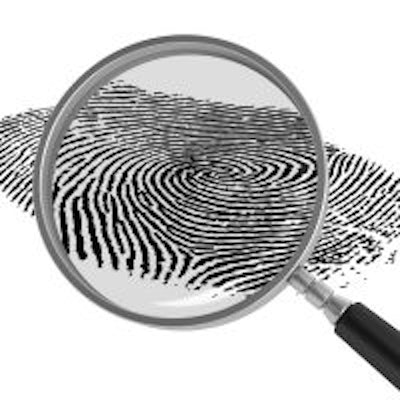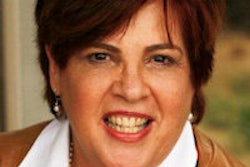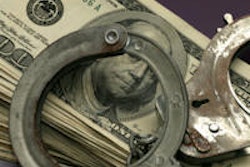
A dental office manager in Georgia who had been with the practice for 20 years was arrested last week -- along with her husband and daughter -- on charges of embezzling $2 million from her employer between 2009 and 2013.
While this is an extreme example, embezzlement unfortunately happens all too often in dentistry. You are more likely to be able to stop it by completing a short questionnaire about the proclivity of your employees to steal from you than by implementing a long embezzlement-prevention checklist, according to an expert in the field.
David Harris, MBA, the CEO of Prosperident and a certified management accountant, said the authors of articles on "10 steps to embezzle-proof your practice" have good intentions, but their approach usually doesn't work.
"Underlying the 'checklist' approach is the belief that if you make it hard to steal, people won't try," Harris told DrBicuspid.com. "This works for crimes of opportunity, but in the dental office setting, the effect of blocking some of the pathways a thief might take -- and believe me, you can't block them all -- is to simply push them to steal from you in a different way."
However, embezzling employees often give clues that they are stealing from you, he said.
His analysis of a 2007 survey of employee termination and embezzlement by the ADA revealed that more than two-third of embezzlements are discovered by observing employee behavior.
“Most embezzlers are longtime employees ... and with this seniority comes a high degree of trust.”
"Rather than trying to turn dentists into hastily trained, ill-equipped auditors, the approach I recommend is to closely and systematically evaluate employee behavior to look for actions that are consistent with dishonesty," he said. "The fact that this behavior is generally difficult to conceal is what makes this technique effective."
Harris estimates that it would take a dentist 30 hours a month to implement some of these checklists. "I can't imagine any dentist I have ever met sacrificing so much clinical or family time to do this," he said.
Also, the recommendations often depend on employee compliance, and it isn't realistic to expect staff to follow procedures that will stop them from embezzling.
"For example, I've seen many offices use a 'for deposit only' stamp on incoming checks -- but embezzlers simply won't stamp the ones they want to steal and convert to cash."
Using checklists also underestimates the ability of thieves.
"Most embezzlers are longtime employees -- typically they have been working for the dentist for five or more years when they start stealing -- and with this seniority comes a high degree of trust, as well as knowledge of the dentist and what he or she looks at," Harris said. "Also, the embezzlers we encounter are both creative and adaptive. Normally, they employ several methodologies for stealing at once and are quick to replace them with others if they perceive a change in the dentist's pattern."
Most embezzlers have above-average intelligence and have no criminal record or black marks in their employment history. They tend to be "people who we believe had no inkling at the time they were hired that someday they might embezzle. But some may have developed an addiction or are desperate for money for other reasons, while others may have tried successfully to steal from you once or twice and have used the money to buy items they couldn't otherwise afford," Harris stated.
His company has created the Embezzlement Risk Assessment Questionnaire, which has 25 questions that he and his staff regularly refine according to new information they gather from dentists.
The questions probe for risk factors for dishonesty on the part of former "suspect" employees, the office manager, other front-desk staff, and all other staff. A positive answer to each question is equates to a certain number of points, and the points total indicates whether it is unlikely, somewhat likely, very likely, or extremely likely that embezzlement is taking place.
If is a warning sign if, for example, you answer "yes" to the question of whether one of your employees takes vacation only when the office is closed or comes into the office while on vacation. Other red flags are an unusually long interval between when bank deposits are made, and cash being held back when other items are deposited.
Here are some of the other particulars the questions probe for:
- An employee is evasive when discussing financial issues.
- The day-end sheet sometimes does not balance to the daily deposit.
- An employee has substance abuse issues, a gambling addiction, or other compulsive behaviors.
- An employee appears to live beyond his or her means.
- An unusually high number of patients complain or have questions about billing and accounting irregularities.



















